Machinery Milestones: Load-carrying tractors
When tractors first arrived in the early 1890s they were used mainly for stationary work, with a belt drive powering equipment such as threshing machines, and the next step was using the drawbar to pull ploughs and other machinery.
Load-carrying tractors followed in the early 1900s, with much of the development work coming from British manufacturers.
Pioneers included the Bedfordshire-based Saunderson company with a farm transport vehicle announced in 1898.

The versatile 30hp load carrying tractor announced by Saunderson in 1906
An improved version followed in 1906, designed with the driver at the front, a mid-mounted 30hp air-cooled engine and a manually tipped detachable load platform at the rear.
The versatility of the new Saunderson featured in a demonstration organised in a wheat field in 1906, starting with the tractor harvesting some of the crop with a binder.
When the binder was unhitched the tractor’s load platform was attached and used to carry sheaves to a threshing machine.
The sheaves were threshed using the tractor’s belt pulley to power the thresher, and the belt then operated a grinder turning the grain into flour.
While bread was being baked from the newly harvested wheat, the Universal ploughed part of the field, prepared a seedbed and sowed next year’s wheat crop.
The programme ended with a picnic tea using freshly baked bread from the newly harvested crop. The Saunderson won a Royal Show Silver Medal in 1906, but it attracted few customers.
See also: Machinery Milestones: Four-wheel drive tractors
Removable platforms
The idea of a removable load platform had already appeared in 1900 on Scotland’s first production tractor.
Designed by Professor John Scott, it was powered by a 20hp engine and the load capacity was said to be three tons. The Scott tractor achieved few UK sales, but a small number were exported.
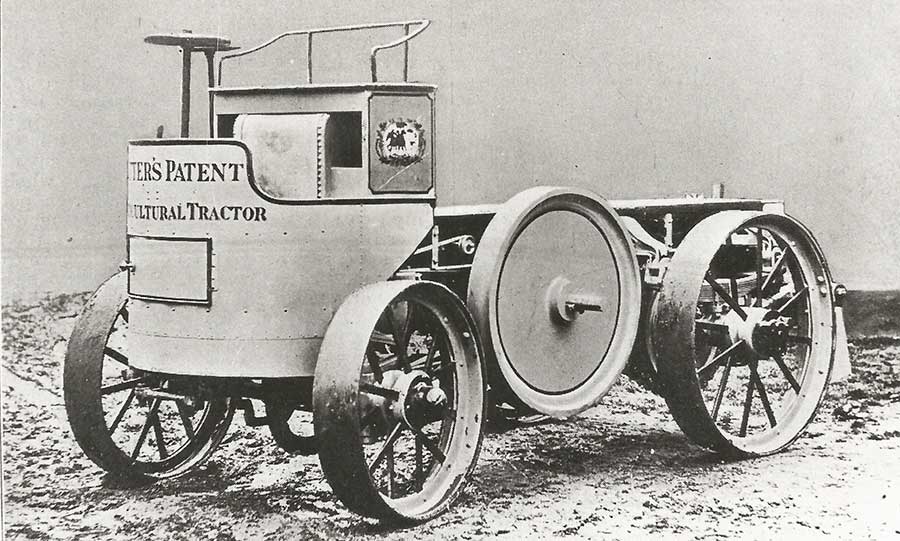
The 12hp Intrepid load carrying tractor was built by Petter in 1903
Another competitor in the load carrier market was the Intrepid tractor built in Somerset by Petter.
Announced in 1903, it featured a single-cylinder horizontal engine producing 12hp, and the two-speed gearbox provided 2.5mph for field work and up to 5mph in the transport gear. It was not a sales success.
The best known of the UK load-carrying tractor pioneers was the Coventry based Daimler company, a leading manufacturer of luxury cars which later became the royal family’s preferred motoring choice.
Farm tractors arrived in the prestigious product range in 1911, powered by a 30hp engine developed for the company’s cars and featuring the patented sleeve valve design that provided the smooth, quiet performance Daimler customers expected.
The specification also included a belt pulley plus a load container at the rear, but there were few customers.
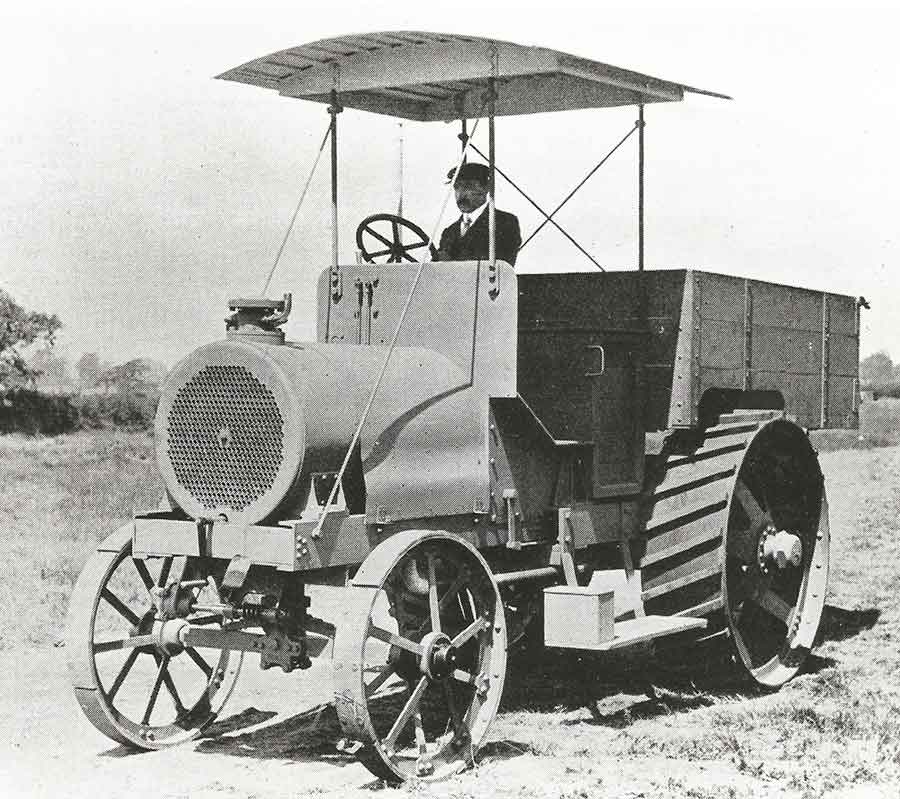
The up-market Daimler car company announced its first tractor in 1911
The only major American company with an interest in the load-carrying tractor idea was Avery, a leading manufacturer of steam traction engines.
With tractors providing increased competition for steam power, Avery announced its new Tractor Truck in 1909 with two front seats and a rear load container with 3 tons capacity.
A 36hp four-cylinder engine provided the power to plough with three 14-inch furrows, and a front-mounted belt pulley operated stationary equipment. Production ended in 1914.
Unimog launch
Interest in load carrying tractors waned during the 1920s and 1930s, and the revival in the late 1940s started in Germany with the Mercedes-Benz Unimog.
When the Second World War ended Germany’s aircraft industry had ceased to exist and a senior aircraft design engineer who had lost his job decided to design a farm tractor instead, and the result, in 1947, was a prototype version of the Unimog.
The production model available from 1948 used a 25hp Mercedes engine, four-wheel drive, suspension front and rear, pto drives front and rear, two seats at the front and a one-tonne capacity load container at the rear.
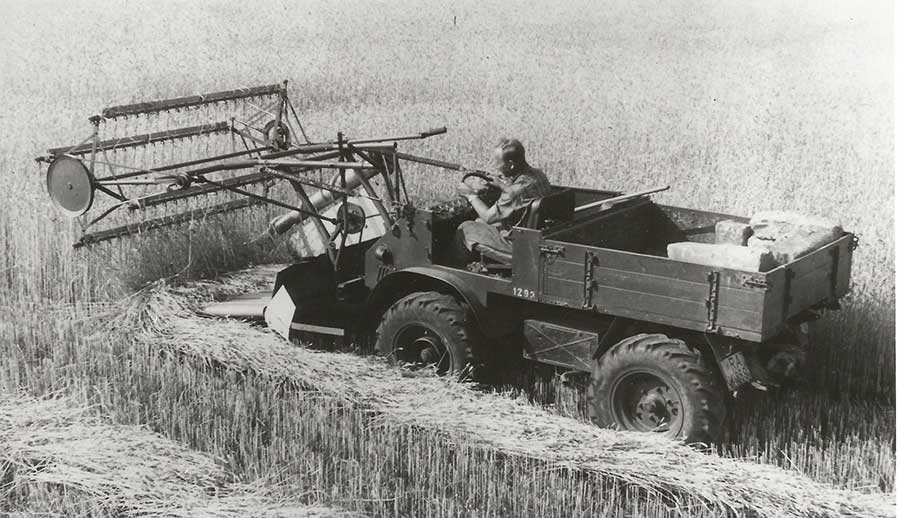
Harvesting with an early version of the Mercedes Unimog
The Unimog attracted enormous interest when it was launched at the 1948 DLG show, and orders flooded in as Europe’s farmers re-equipped after the war.
Now, 80 years later and with numerous design updates, the Unimog is a continuing success story with the production total recently passing 350,000, although most of the demand now is for construction work and military use.
The next German load carrying tractor success arrived in 1951 when Lanz announced their Alldog model based on a rectangular frame with the driver and engine side-by-side at the rear.
This left space for front, mid and rear-mounted equipment, providing the versatility to operate more than 50 officially approved attachments.
Many of them were specially designed for the Alldog including a range of haymaking machines, a single-row sugar beet harvester, a mid-mounted plough, implements for rowcrops, and even a portable milking machine for small dairy herds.
A tipping load-carrying container was probably the most popular attachment.
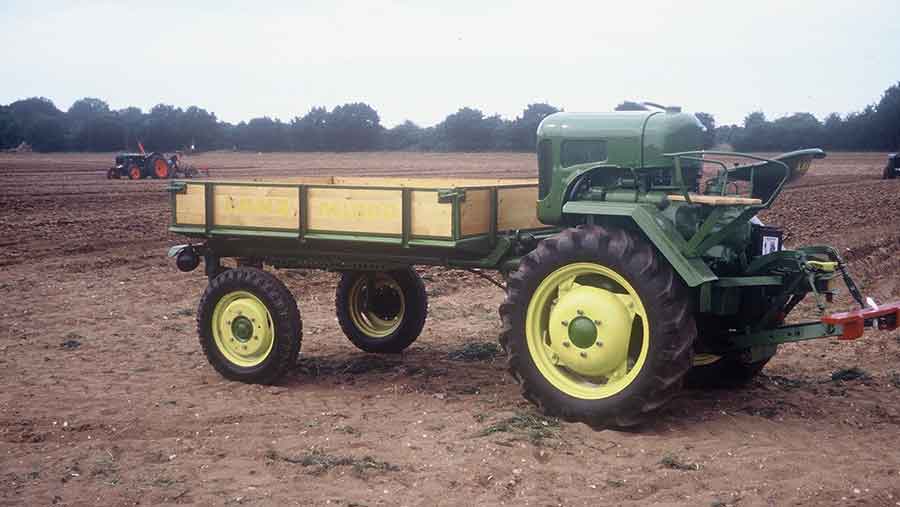
A Lanz Alldog tractor equipped for load carrying and painted in John Deere colours
The Alldog was a big success on the continent, and some were imported into the UK.
Production started with a 12hp petrol/paraffin power unit and the final version, with an 18hp diesel engine, arrived in 1956 when the Lanz factory was sold to provide John Deere’s European production base, which is why the last few Alldogs were finished in John Deere colours.
British makers
Britain’s load-carrier success of the 1940s was the Opperman Motocart introduced in 1946 to replace the horse and cart, which was still doing much of the transport work on UK farms.
The Opperman family farmed and ran an engineering business in Hertfordshire, and their first Motocart was built for their own farm where it was so successful that they began commercial production.
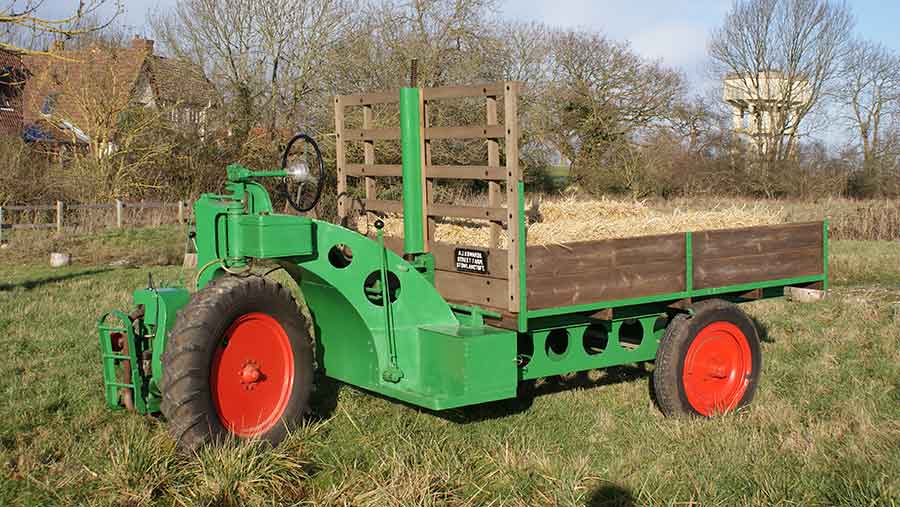
The Opperman Motocart was designed to replace a horse and cart
The design was simple, with a tricycle layout and an 8hp air-cooled engine attached to the powered front wheel.
With 1.5 tons load capacity and an 11.2mph top speed, the Motocart easily outperformed a horse-drawn cart, and the sales total reached more than 10,000 when production ended in 1955.
Since then there has been little interest in load-carrying tractors. Alternatives for moving small loads have arrived, including link box attachments for mounting on the back of the tractor.
Lightweight all-terrain utility vehicles are also a popular choice, and we have adopted America’s enthusiasm for pick-up trucks.
There is also a demand for tractors with a load space for equipment such as demountable sprayers or spreaders, but these are not designed as transport tractors for general load carrying.
Experimental tractors
A major setback for agricultural load-carrier enthusiasts came in the 1980s after the Silsoe Research Institute (SRI) decided to organise a major transport tractor investigation.
This involved building a special 120hp tractor for carrying demountable load units.
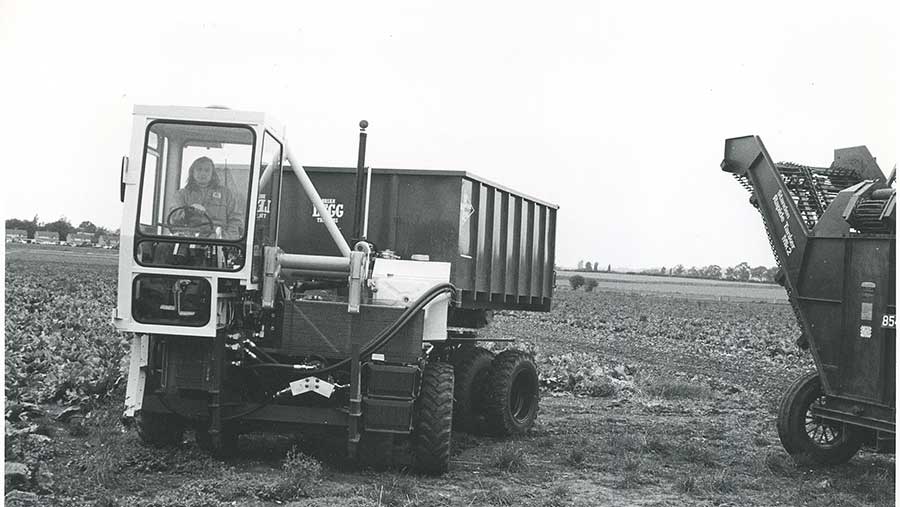
The SRI experimental transport tractor was outperformed in a comparison with a conventional tractor and trailer
For research purposes the tractor was fitted with both a 10-speed mechanical gearbox and a hydrostatic drive providing a 65kph maximum speed.
Rear wheel and pivot steering were both fitted as well as front and rear brakes and suspension.
Special load units carried behind the front cab were mounted or removed using a hydraulically operated hook lift, and they included a container for grain or root crop harvesting, a rear delivery manure spreader body and, for silage making, a rear-mounted load container for grass from a front-mounted forage harvester.
The experimental tractor was used in an extensive field test programme during the early 1980s, and the verdict was a thumbs down for the load carrier.
A standard 126hp tractor working with ordinary trailed equipment would have a much lower capital cost than the special transport tractor and its demount units, the official report said, and work rates with the standard tractor would be much higher because it pulled bigger loads than the transport tractor could carry.

